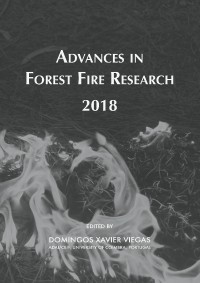Please use this identifier to cite or link to this item:
https://hdl.handle.net/10316.2/44678| DC Field | Value | Language |
|---|---|---|
| dc.contributor.author | Linn, Rodman | |
| dc.contributor.author | Jonko, Alexandra | |
| dc.contributor.author | Winterkamp, Judith | |
| dc.contributor.author | Runde, Isabelle | |
| dc.contributor.author | Sieg, Carolyn | |
| dc.contributor.author | Parsons, Russ | |
| dc.contributor.author | Pimont, Francois | |
| dc.date.accessioned | 2018-11-11T13:16:48Z | |
| dc.date.accessioned | 2020-09-06T17:30:56Z | - |
| dc.date.available | 2018-11-11T13:16:48Z | |
| dc.date.available | 2020-09-06T17:30:56Z | - |
| dc.date.issued | 2018 | - |
| dc.identifier.isbn | 978-989-26-16-506 (PDF) | |
| dc.identifier.uri | https://hdl.handle.net/10316.2/44678 | - |
| dc.description.abstract | Numerical simulations with a coupled fire/atmosphere model, FIRETEC, were used to investigate some of the mechanisms through which fire is influenced by topographic slope in the direction of the wind. This investigation focuses its attention on the local two-way feedbacks between the fire and the atmosphere around it. Idealized configurations are used to eliminate some of the complexity associated with variable environmental slope, winds and fuels that are frequently found in real-world wildland-fire situations. The simulated fires burn through homogeneous tall grass with static prescribed upstream wind profiles. Simulations were performed on homogenized slopes in which the upstream wind is aligned parallel to the ground in the direction of maximum slope (wind blowing uphill). Simulations were also performed to investigate the influences of having winds intersect the slope at oblique angles, such as horizontal winds colliding with a slope. The results of these simulations provide insight into some of the phenomenological feedbacks that determine the nature of these macro-scale trends. By changing the local slope, the balances that control the interactions between the fire and surrounding atmosphere, thus changing both the local wind patterns and the fire behavior. Components of the wind perpendicular to the land surface also influence the fire behavior, suggesting the importance of incorporating knowledge of upstream topography into fire behavior predictions. This numerical study takes advantage of the richness of information available in process-based simulations and the control over the environmental conditions that is inherent to this type of tool, but is intended to complement laboratory and field observations, which are not subject to the simplifications or abstractions of fine-scale details in such models. | eng |
| dc.language.iso | eng | - |
| dc.publisher | Imprensa da Universidade de Coimbra | por |
| dc.relation.ispartof | http://hdl.handle.net/10316.2/44517 | por |
| dc.rights | open access | - |
| dc.subject | wildfire modeling | eng |
| dc.subject | slope effects | eng |
| dc.title | Numerical investigations of coupled fire-atmosphere feedbacks influencing fire behavior on slopes | por |
| dc.type | bookPart | por |
| uc.publication.firstPage | 1293 | - |
| uc.publication.lastPage | 1295 | - |
| uc.publication.location | Coimbra | por |
| dc.identifier.doi | 10.14195/978-989-26-16-506_161 | - |
| uc.publication.section | Chapter 7 - Short Contributions | por |
| uc.publication.digCollection | PB | por |
| uc.publication.orderno | 161 | - |
| uc.publication.area | Ciências da Engenharia e Tecnologias | por |
| uc.publication.bookTitle | Advances in forest fire research 2018 | - |
| uc.publication.manifest | https://dl.uc.pt/json/iiif/10316.2/44678/203863/manifest?manifest=/json/iiif/10316.2/44678/203863/manifest | - |
| uc.publication.thumbnail | https://dl.uc.pt/retrieve/11056241 | - |
| uc.publication.parentItemId | 55072 | - |
| uc.itemId | 68760 | - |
| item.fulltext | With Fulltext | - |
| item.grantfulltext | open | - |
| Appears in Collections: | Advances in forest fire research 2018 | |
Files in This Item:
| File | Description | Size | Format | |
|---|---|---|---|---|
| numerical_investigations_of_coupled_fire-atmosphere.pdf | 632.91 kB | Adobe PDF |  |
Items in DSpace are protected by copyright, with all rights reserved, unless otherwise indicated.
